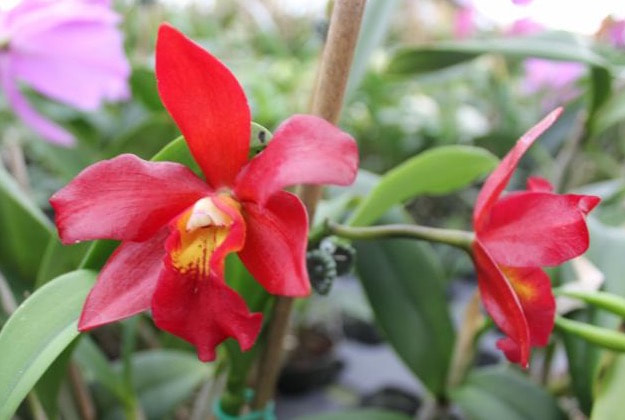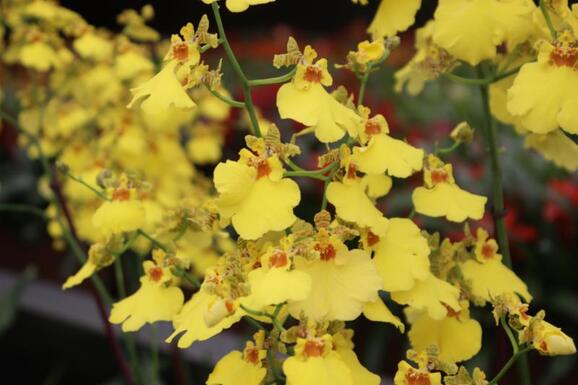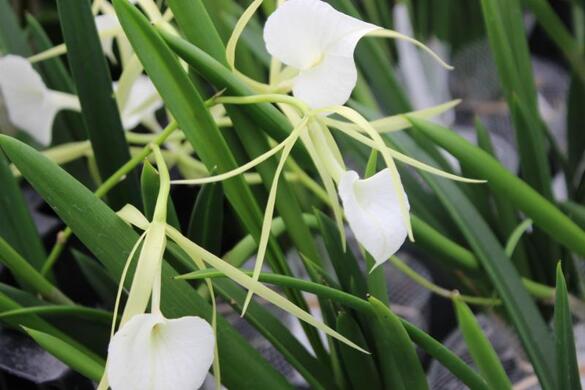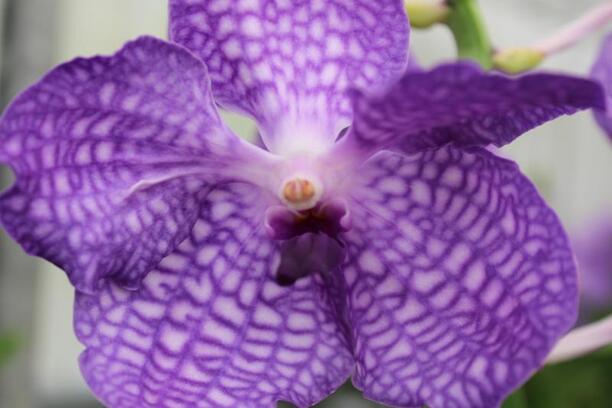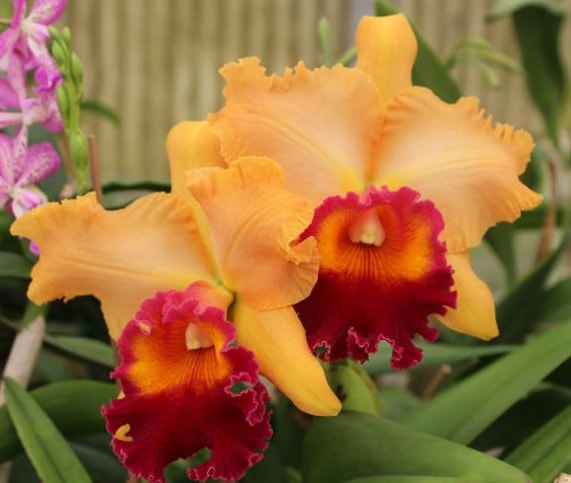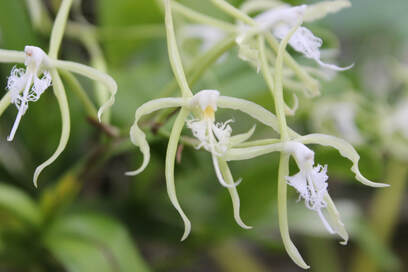 “When a man falls in love with orchids, he’ll do anything to possess the one he wants. It’s like chasing a green-eyed woman or taking cocaine…it’s a sort of madness.” - Susan Orlean, The Orchid Thief To the uninitiated, orchidelirium may sound like a fabricated term or a playful exaggeration—but it’s very real. For centuries, orchids have inspired fanatical fascination across all walks of life, including the scientific community.  Origin Story Legend has it that orchids arrived in London around 1818 when William John Swainson used them as packing material while shipping a collection of tropical plants from South America. One of these orchids bloomed on arrival, and the rest is history! While the facts of that story are debatable, there’s no doubt that the 19th century was the height of orchidelirium. The hysteria surrounding these beautiful plants pushed auction prices into the thousands, and specialized orchid hunters—more adventurers than botanists—were employed to track down the more exotic varieties of the already elusive bloom. Despite great risk, these hunters would venture into the perilous wilderness—and face-off with cutthroat competitors—to procure the rare and sought-after orchid for which wealthy Victorians were willing to pay a king’s ransom. Science Lends a Hand Without the helping hand of science, the orchid may have remained a rarity, attainable only by those of great wealth and influence. For example, you could wait as much as a decade for the plants to grow large enough for separation, and the process of division could cost thousands. Nowadays, advances in reproduction, propagation and cloning have made orchids easily attainable by all walks of life. According to Smithsonian orchid specialist Tom Mirenda, today’s consumers get “the cream of the crop” thanks to the cloning of plants selected specifically for their shape and color. And experimentation continues to push the envelope—rumor has it that one breeder is attempting to integrate the genes of a glow-in-the-dark squid! But it’s not all fun and games; the scientific community continues to make progress, even today. New breeding methods are being discovered, and DNA research is helping scientists understand how the various orchid species (over 25,000!) react to plant life in the wild. These discoveries will help ensure the survival of the orchid—and orchidelirium—for generations to come. Happy blooming!  Orchids are ancient flowers that have been enjoyed by many civilizations throughout history. Their significance has varied from culture to culture. Despite regional differences, their meaning and symbolism have always reflected their natural elegance and exoticism. 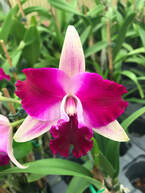 LC. Purple Cascade 'Fragrance Beauty' LC. Purple Cascade 'Fragrance Beauty' Ancient Greece and China: A Symbol of Vitality and Fertility In both Ancient Greece and China, the orchid was seen as a symbol of vitality and fertility. The Chinese would give it as a gift that suggested many children, which was viewed as a blessing in ancient times. The Chinese also saw the orchid as a sign of innocence and refinement, although these were less prevalent than fertility. The Greeks had a slightly more elaborate belief in connecting an orchid to fertility. They believed that if an unborn child’s father ate large (young) orchid tubers, then the child would be a boy. Alternatively, if the mother of the unborn child ate little tubers, the child was expected to be a girl. 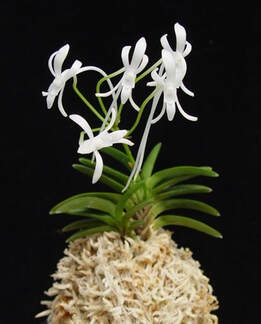 Neofinetia falcata, Photo Credit: AOS Neofinetia falcata, Photo Credit: AOS Medieval Japan: A Trophy of Warriors In Pre-Industrial Japan, Samurai would search for a specific type of orchid: Neofinetia falcata. Native to Japan, this vanda is rare -- especially in the wild. Prized for its foliage and fragrance, this orchid was more sought-after than most by Japan’s royalty. To please the nobles whom they served, Samurais would go on grand journeys in search of a Neofinetia falcata. If a Samurai found one and successfully brought it back, it’d be presented as a trophy of the warrior’s quest, a sign of his bravery. Victorian England: A Sign of Luxury and Wealth Orchids didn’t reach England until the Victorian era, and even then they were rare. They weren’t native to England, and transporting them across oceans was tenuous. Their delicacy made them uncommon, which only heightened interest in them. They quickly became the flower of choice among gentry, not just because they were beautiful but also because they showed off one’s wealth. To own an Orchid in Victorian England was to indulge in luxury, something commoners could little afford to do. 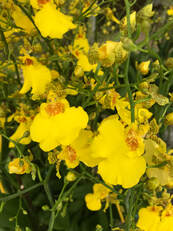 Onc. Sweet Sugar 'Lemon Drop' HCC/AOS Onc. Sweet Sugar 'Lemon Drop' HCC/AOS Today: A Palette of Colors and Meanings Today, orchids are available in more colors than ever before, and color is the primary determiner of an orchid’s meaning:
The orchid has a deep, rich history of meanings and symbols, but its message has never been as versatile as it is today. With so many colors to choose from, not to mention various varieties of orchids, you can find one that perfectly expresses your sentiments, whatever they may be.
For more about orchids and orchid care, visit EasyOrchidGrowing.com. Happy Blooming! 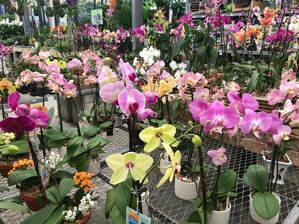 As orchids have increased in popularity, so too has their availability at traditional nurseries, home improvement stores and grocery stores. So with more choices available, how do you know that you are selecting a healthy plant? Whether you are just looking for an arrangement that will last longer than traditional cut flowers, or you plan to nurture the plant for years of enjoyment, it’s important to take a few extra minutes to pick the right plant. 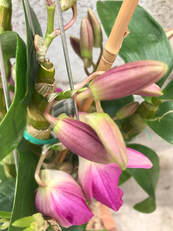 What to Look For When Selecting Your Orchid Buds and Flowers
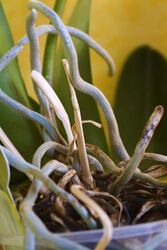 Roots
Foliage
Pots and Potting mix
As you begin or continue your journey to learn more about orchids, we've pulled together a listing of basic terminology that you may encounter while researching these beautiful plants. We hope you find this list to be useful.
Aerial Roots: Roots that are above the soil’s surface – usually grown for plant support. Anther: The pollen producing part of a flower. Apical Meristem: Found at the tip of the shoot and the root of the orchid. By continually dividing its cells, it causes the plant to grow longer. Back Bulb: A pseudobulb of an orchid that remains on the plant after the terminal growth has been removed as a division. Baggy Baby: Also known as “blooming-sized orchid” or “packaged orchids” a Baggy Baby, grown and sold by Better-Gro, delivers the thrill of watching an exotic plant through all stages of its development. Bifoliate: A plant having two leaves on a pseudobulb. Column: The reproductive area of the orchid flower. Disease: Any deviation from the normal growth structure or quality of a plant that is a continuous condition producing visible symptoms, thus affecting the quality or value of the plant. Division: A form of plant propagation in which new plants are separated from the parent plant. Environment: The surroundings or conditions in which a plant lives or operates. Epiphyte: A plant that grows harmoniously upon another plant and derives its moisture and nutrients from the air, rain, and debris accumulating around it. Fertilizer: Also known as plant food. A natural or synthetic material which includes nitrogen, phosphorus, and potassium compounds that, when given to a plant, increases its capacity to support growth. Genus: A group of related plants consisting of two or more species possessing certain common characteristics distinct from any other group. Host: A plant that provides some or all the nutrients for a particular pest or fungus. Intermediate Orchid: A plant that falls in the middle on a growing range – meaning it is not a cool grower (grows in colder environments) or a warm grower (grows in warmer environments), but rather it can be grown in most growing environments. Keiki: Baby orchids that sprout from an orchid’s flower stems. Literally translated, “keiki” is Hawaiian for “the little one” -- and that’s just what keikis are. They’re little orchid plants. Leaf: The part of an orchid where its primary function is photosynthesis. Light: One of the key factors for growing a healthy plant. Plants use energy from light to convert carbon dioxide into food. Lip: The lower petal of an orchid used by flowers to provide a landing platform for its pollinators. Mericlone: An identical plant which was produced from tissue culture of the apical meristem. Orchidelirium: Having an obsession with orchids – inspiring scientists, collectors, and hobbyists alike. pH: A measure of the acidity in water. A measure of 6.5 pH is perfect for orchids. Pseudobulb: The storage organ found on sympodial orchids. Monopodial: Having one main stem which grows straight up. Pest: Any organism that can cause disease or injury to a plant. Rhyzome: An underground stem that connects two pseudobulbs. Sympodial: Having lateral continued growth (more than one stem) coming from a pseudobulb. Terrestrial: A plant that has roots that grow and receive nutrients from the soil. Virus: Microscopic pathogen which can be spread by insects or unsanitized equipment. For more information on orchid care, EasyOrchidGrowing.com Happy Blooming! Whether you are looking to splurge on a big gift or opt for something simple, flowers are likely to be on your list this Mother’s Day, and you are not alone. It is predicted that nearly 70% of Americans will purchase flowers for their moms and grandmothers this May. But before you head out to pick up an arrangement of cut flowers, consider the benefits of a live orchid. Known for their beauty and longevity, orchid blooms can last for weeks, and plants can live for years. They come in many varieties, sizes and fragrances and can be easily found at your local garden store or home improvement center. Express Your Feelings in Color Giving an orchid is the easy part, but picking the right one or just one may prove difficult. To simplify your selection, we've included some tips to help you express your feelings in color. Pink is traditionally given on Mother’s Day. It signifies thoughtfulness, unconditional love and innocence. Red expresses deep love, respect and courage. Yellow flowers represent happiness, joy and friendship. White signifies innocence, truth, perfection and purity. Purple represents royalty, grace, elegance and admiration. Orange blooms signify enthusiasm and excitement. If you can’t decide what color best represents your mom, give her a rainbow of colors to express your love and gratitude.
From our Better-Gro family to yours, we wish everyone a Happy Mother’s Day. If you are looking for an excuse to add another orchid to your collection, here it is. April 16th is observed annually as National Orchid Day. We’re sure you can come up with a variety of ways to celebrate your love of orchids, but here are a few additional ideas:
|
Resources
|
Company |
|


